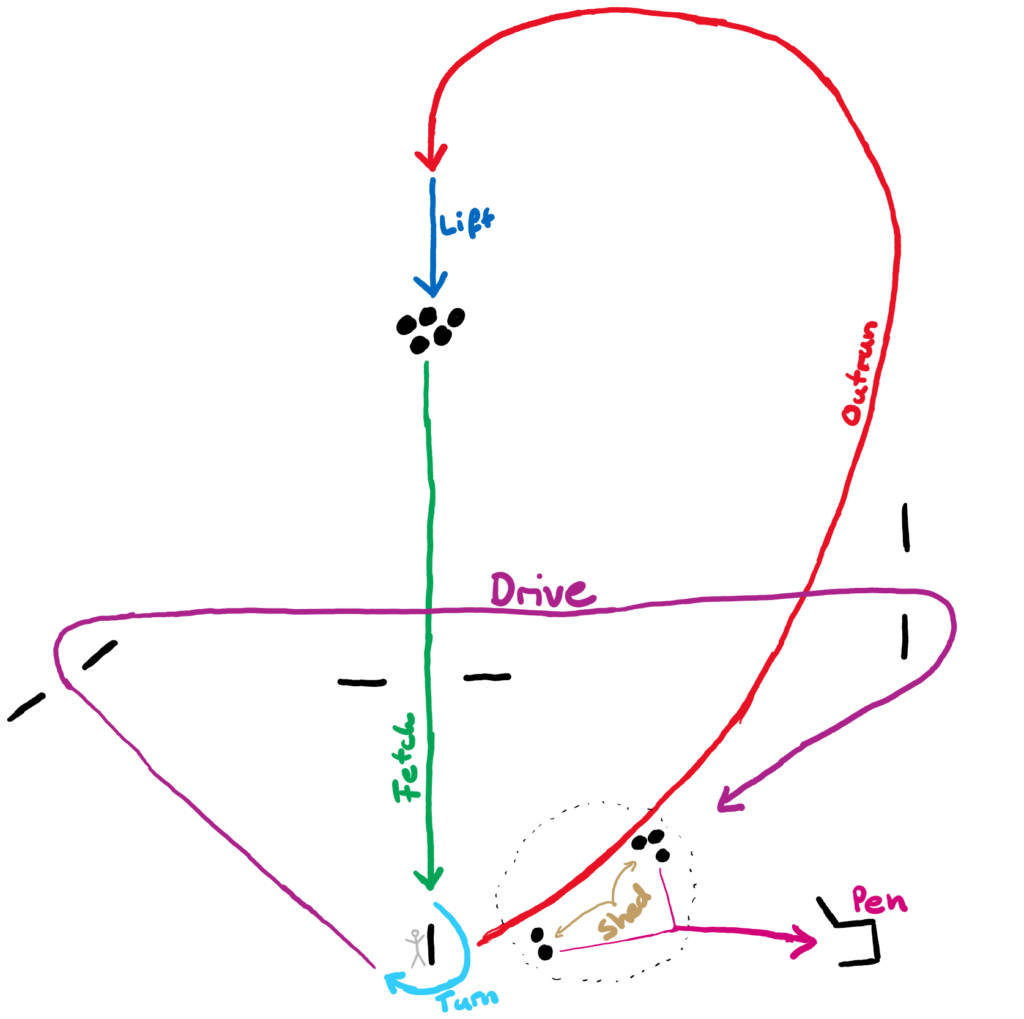The so-called Sheepdog Trials have enjoyed great popularity in their country of origin, Great Britain, for centuries. At the trials, handlers compete with their Border Collies and the best team wins. The selection pressure on the breed has therefore been very high for a long time and has produced absolute specialists.
There are three different classes, Class 1 – Beginner, Class 2 – Advanced and Class 3 – Open. The basic structure of the test is about the same in all classes, only the size of the field and thus the degree of difficulty vary considerably.
At the beginning there is always the outrun, where the dog is sent to the sheep by the handler, who has to stay at the start post. As a rule, the dog finds the sheep, but if it does not, the handler must direct it in the right direction with commands. In class 1 this distance is only a manageable 150 m, in class 3 it is already at least 300 m. After the outrun, the lift takes place, i.e. the moving of the sheep by the dog. The next task is the fetch, i.e. bringing the sheep to the handler. Once the sheep have reached the handler, the turn follows, in which the sheep are driven around the start post at as short a distance as possible. The turn is always in the direction of the drive, which follows directly. During the drive the sheep are driven in as straight a line as possible through the two drive gates, first away, then across and at the end into the shedding ring. In class 1 the shed is omitted, in the other two classes the group of sheep must be separated in the shedding ring. The exact procedure is determined by the judge at the briefing. If the shed is successful, the sheep are driven into the pen. The test ends with the closing of the pen. A time limit is set in advance for the test, in which all tasks must be completed well. For each mistake, points are deducted from a starting score. The team that has the most points and has thus made the fewest mistakes wins.
In the open class there is also the brace, where a handler starts with two dogs, or the double gather, where two groups of sheep far apart have to be caught up one after the other.
